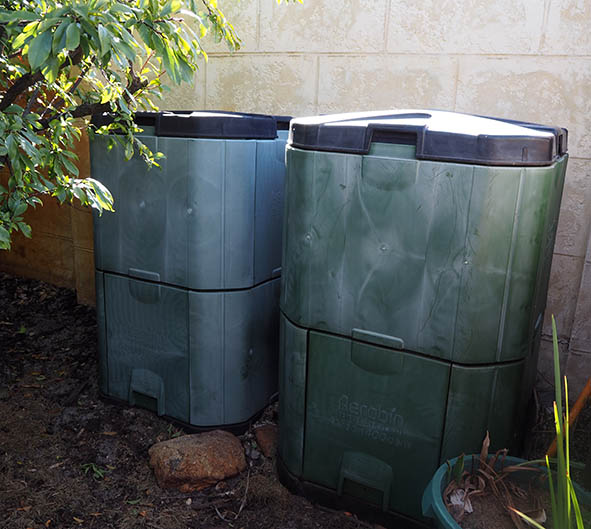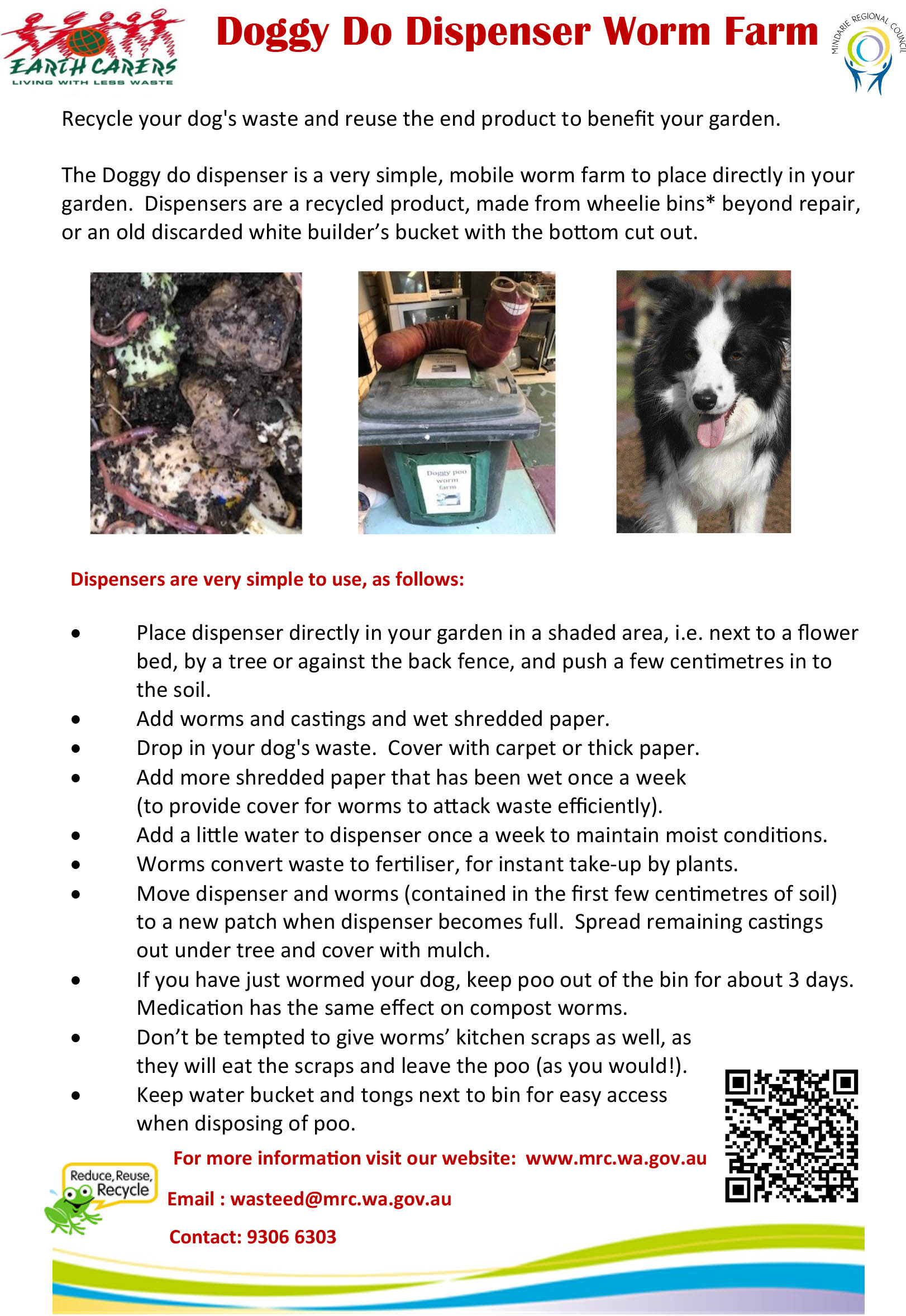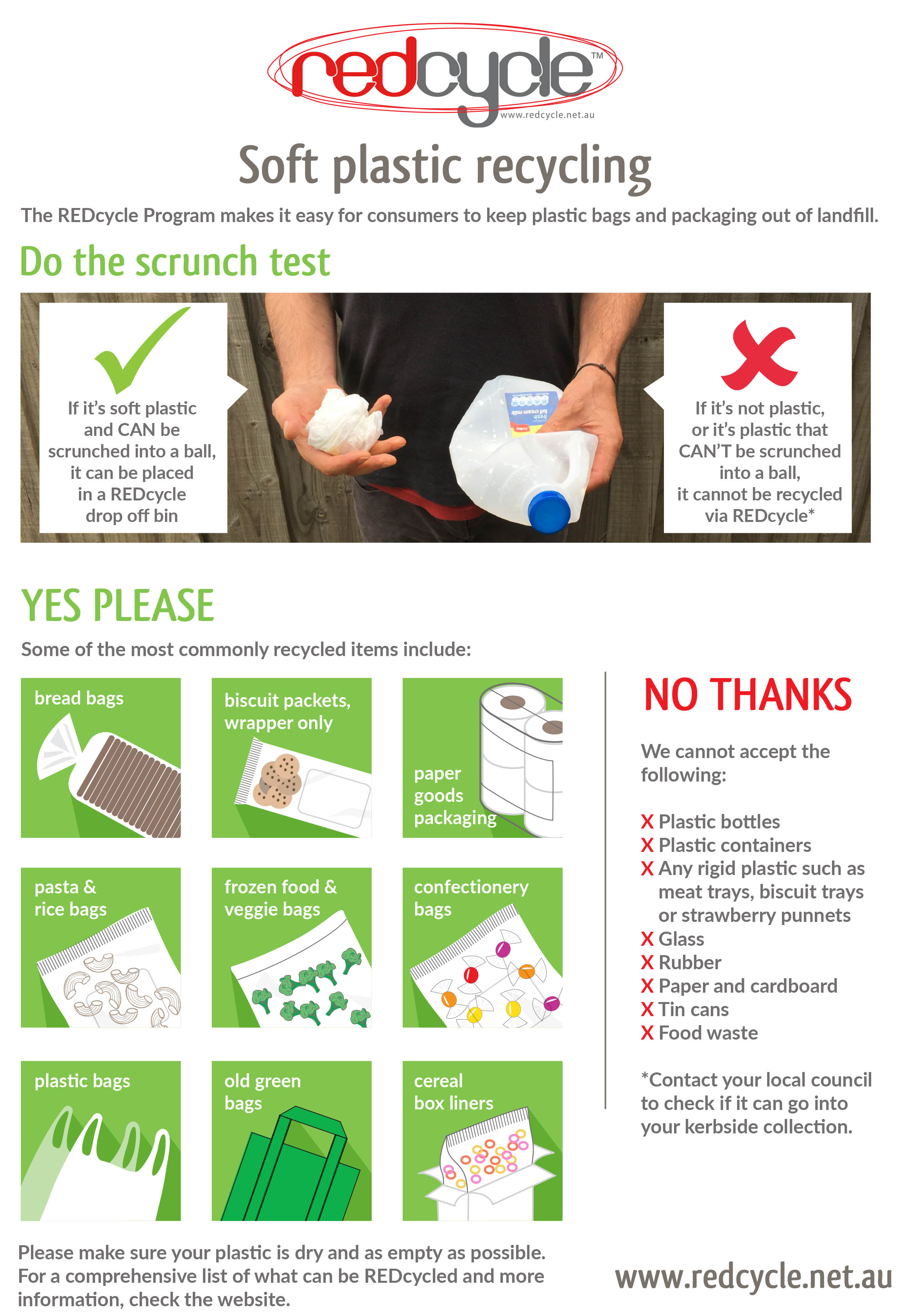I’ve been interested in composting for some time, mostly so that we can recycle our kitchen/garden waste rather than send it to landfill. Last week I was lucky enough to attend a great workshop presented by Peg Davies and Anne Pettit from Mindarie Regional Council. They had a host of useful information to share about worm farms, composting and recycling.
For years we’ve used a two compost bin system at home. The one on the right is currently our active bin. Into that I dump kitchen scraps (no meat), garden clippings, shredded newspaper and, when I think of it, some straw. The one on the left is the ‘inactive’ bin. We filled that last year, but stopped using it at the end of winter and left the contents to their own devices. Soon I’ll be emptying out the fabulous compost it’s created and spreading that around our garden. Then that bin will become the active bin.. and so on.
This system works really well, although I have had some rather surprising compost adventures along the way. These have included unusual (and very creepy) maggots, an abundance of cockroaches, an infestation by a bees and a surprise mouse. Not surprisingly at all, I rapidly learned to wear gloves and boots every time I play with the compost!
The reason I went along to this workshop was to try to find out how to deal with the compost cockroaches: do I need to zap them? Are they a problem… or just creepy?
I came away with an answer to that quandry and whole lot of other info too, including Anne’s recipe for the delicious pear cake she brought along for morning tea 🙂
- Apparently compost cockroaches aren’t a big deal. It turns out that the big critters break down the food scraps and make it easier for the littler critters to do their jobs. So, basically, just fortify-the-hell-up and cope. If the cockroach numbers get a tad epic, then add more carbon (shredded newspaper, etc) or, in extreme cases, a chicken. Yup, a live chicken. That’ll sort the little darlings out in no time, they assured us. I may have to borrow one from DaughterDearest sometime soon…
- Doggy-do worm farms are a thing – who knew?! Totally going to give that a go under our fig tree when we plant it out the back. This will reduce our plastic bag use considerably and hopefully make the fig tree happy.
- I hadn’t realised that soft or flexible plastics shouldn’t go in the verge side bins. This includes any plastic that can easily scrumpled into a ball – like bread packets, biscuit packs, cereal bags and the like. They get caught in the sorting machines and jam up the works. And there I was thinking I was doing the right thing. Sigh. Upside is that redcycle (soft plastic) bins are now in place at various shopping centres, so I’ll be able to drop ours off each week when I shop.
- Did you know that expanded polystyrene also can’t go into verge side recycling bins? I didn’t. Fortunately companies like Claw Environmental will accept it for processing, so next time we get a large appliance we’ll definitely be heading out to drop the packaging off there.
Overall it was a really informative morning. Peg and Anne had many more tips to share – and lots of resources to offer. Check out the MRC website for heaps of downloadable info sheets. And, if you get the opportunity, definitely attend one of their (free!) workshops.






